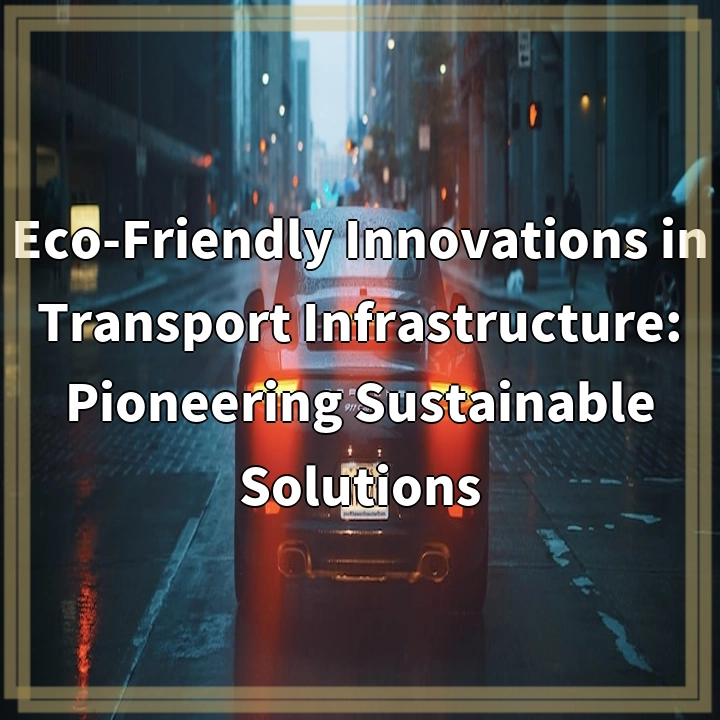
What are Eco-Friendly Innovations in Transport Infrastructure?
Eco-friendly innovations in transport infrastructure refer to the implementation of sustainable solutions and technologies within the transportation sector. These innovations aim to minimize the negative environmental impacts associated with transportation, such as greenhouse gas emissions, pollution, and habitat destruction.
Real-World Problems Associated with Transport Infrastructure
Transport infrastructure has traditionally been reliant on fossil fuel-based technologies, which contribute significantly to carbon emissions and air pollution. This reliance on non-renewable energy sources has led to several environmental challenges:
- Greenhouse Gas Emissions: The transport sector is a major contributor to global greenhouse gas emissions, primarily from the burning of fossil fuels. These emissions contribute to climate change, resulting in rising temperatures, sea-level rise, and extreme weather events.
- Air Pollution: Vehicles and transport infrastructure emit pollutants such as nitrogen oxide (NOx), particulate matter (PM), and volatile organic compounds (VOCs), which lead to poor air quality and negative impacts on human health and the environment.
- Dependence on Non-Renewable Energy: Traditional transport infrastructure heavily relies on non-renewable energy sources, such as gasoline and diesel, leading to resource depletion and geopolitical challenges associated with oil dependence.
- Land and Habitat Destruction: The construction of transport infrastructure, such as highways and railways, often results in the destruction of natural habitats and fragmentation of ecosystems, causing loss of biodiversity and disruption to wildlife migration patterns.

Pioneering Sustainable Solutions for Transport Infrastructure
1. Transitioning to Renewable Energy:
One solution to reduce the environmental impact of transport infrastructure is to shift towards renewable energy sources. This could involve electrifying public transportation, implementing charging stations for electric vehicles, and integrating renewable energy generation into transport infrastructure systems.
2. Improving Energy Efficiency:
Enhancing the energy efficiency of transport infrastructure can significantly reduce carbon emissions. This can be achieved through the use of energy-efficient vehicles, optimizing transport routes and logistics, and implementing intelligent transportation systems that prioritize fuel efficiency.
3. Promoting Sustainable Modes of Transport:
Encouraging sustainable modes of transport, such as cycling, walking, and public transit, can help reduce the reliance on private vehicles and lower emissions. Infrastructure improvements, such as bike lanes, pedestrian-friendly walkways, and well-connected public transportation networks, are vital to support the adoption of these modes.
4. Incorporating Green Infrastructure:
Integrating green infrastructure elements into transport systems can mitigate the negative environmental impacts. This includes the implementation of green roofs, vertical gardens, and roadside vegetation to reduce air pollution, regulate temperatures, and support biodiversity.
5. Implementing Smart Transportation Technologies:
Smart transportation technologies, such as intelligent traffic management systems, real-time information platforms, and vehicle-to-vehicle communication, can optimize transportation operations, reduce congestion, and improve fuel efficiency.















